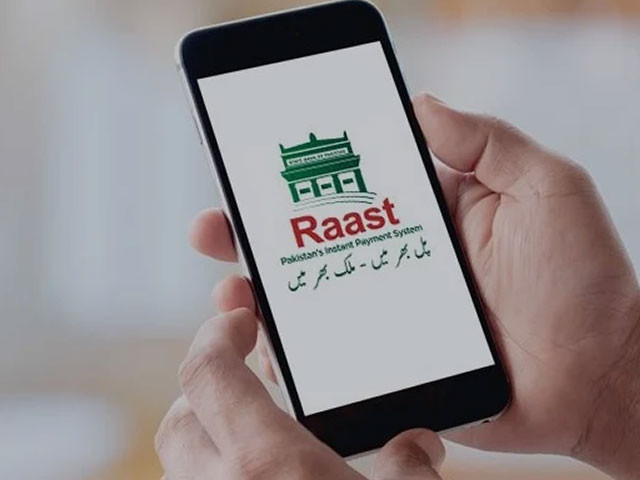
State Bank of Pakistan (SBP) Governor Jameel Ahmed announced on Friday that the country has achieved a key milestone by enabling payments in Pakistani rupees between Pakistan and Arab countries through the integration of Raast, the instant payment system, with the Arab Monetary Fund's Buna platform.
In addition, Pakistan's central bank is working to enable e-wallet holders in the country to make direct payments in China via online banking channels, as part of its broader efforts to enhance regional financial connectivity and promote digitalisation on all fronts.
The SBP also revealed plans to launch the third National Financial Inclusion Strategy (NFIS) 2028 during the current fiscal year (2024-25). This strategy aims to extend banking services to 75% of the adult population, up from the current 60%, with a target that, by 2028, 25% of these users be women.
In the Governor's Annual Report for 2023-24, presented to parliament on Friday, SBP Governor Jameel Ahmed stated, "In terms of cross-border digital financial integration, the SBP signed an MoU to integrate Raast with the Arab Monetary Fund's Buna, a cross-border payment system, marking a significant milestone with the inclusion of the Pakistani rupee as a settlement currency."
He further noted that the SBP approved a cross-border partnership between Pakistani and Chinese financial services firms, enabling e-wallet users in Pakistan to make payments in China.
This development is expected to facilitate e-shopping and small-ticket purchases from China, within the specified annual limits.
After the successful completion of NFIS 2018-2023 in December 2023, the SBP is now preparing to launch the third edition of NFIS (2024-28) to address ongoing challenges in digital financial inclusion. NFIS 2028 aims to harness digital technologies to improve access, usage, and the quality of financial services.
The strategy will build on the progress made in the previous two NFIS strategies (2020 and 2023) to not only overcome existing hurdles but also foster innovations to enhance the use and quality of formal financial services.
NFIS 2028 will focus on improving the availability and usage of secure and accessible digital financial services, creating a better ecosystem for priority sector financing, and strengthening the capabilities of financial institutions and consumers alike.
A key focus will be on increasing financial inclusion for women, youth, and disabled individuals, particularly in underserved areas.
To drive inclusive growth and economic development, NFIS 2028 outlines specific measures to revolutionise financing in priority sectors such as SMEs, housing, agriculture, microfinance, and sustainable finance, with the ultimate goal of improving the well-being of low-income and underprivileged populations.
Based on these priorities, NFIS 2028 will be launched in FY25, with a headline target of raising financial inclusion from 60% to 75% and reducing the gender gap to 25% by 2028.
Additionally, the SBP is in the process of developing a financial inclusion index for Pakistan, designed to measure the true level of financial inclusion in the country and guide evidence-based policymaking.
This index will be based on three key parameters: access, usage, and quality, providing a comprehensive analysis and accurate reflection of the financial inclusion landscape. The results of the index will be made publicly available annually.
Previously, the SBP measured financial inclusion primarily by the number of depositors, following the methodology used by the World Bank and other central banks. The introduction of this index will ensure a more nuanced understanding of financial inclusion in Pakistan.
Electronic warehouse receipt financing
The SBP launched the Electronic Warehouse Receipt Financing (EWRF) in February 2022 for maize and rice crops, enabling farmers, traders, and processors to secure financing from banks against physical commodities stored in accredited warehouses without the need for traditional collateral.
Banks continued to provide financing under the EWRF system, disbursing Rs1,891 million to 637 borrowers in FY24, surpassing the target of Rs1,741 million. This is up from Rs1,125 million disbursed to 411 borrowers in FY23.
Crop loan insurance
To reduce the impact of natural disasters on agriculture, the government covers the insurance premium for eligible crop loans, applicable to banks and microfinance banks for wheat, cotton, rice, sugarcane, and maize.
Between July 2008 and December 2023, banks submitted insurance premium claims totalling Rs11.3 billion for 7 million beneficiaries under the Crop Loan Insurance Scheme (CLIS).
Livestock insurance
The Livestock Insurance Scheme for Borrowers (LISB) allows small livestock farmers to insure up to 10 animals. Between July 2014 and December 2023, banks submitted insurance premium claims amounting to Rs3.22 billion for 0.954 million beneficiaries under the LISB.



1729662874-0/One-Direction-(1)1729662874-0-165x106.webp)





1732084432-0/Untitled-design-(63)1732084432-0-270x192.webp)








COMMENTS
Comments are moderated and generally will be posted if they are on-topic and not abusive.
For more information, please see our Comments FAQ